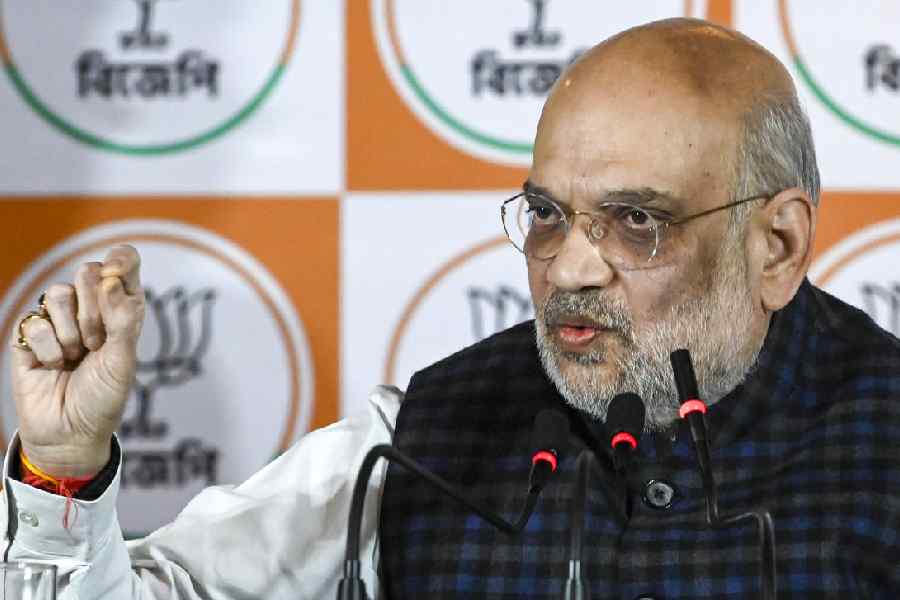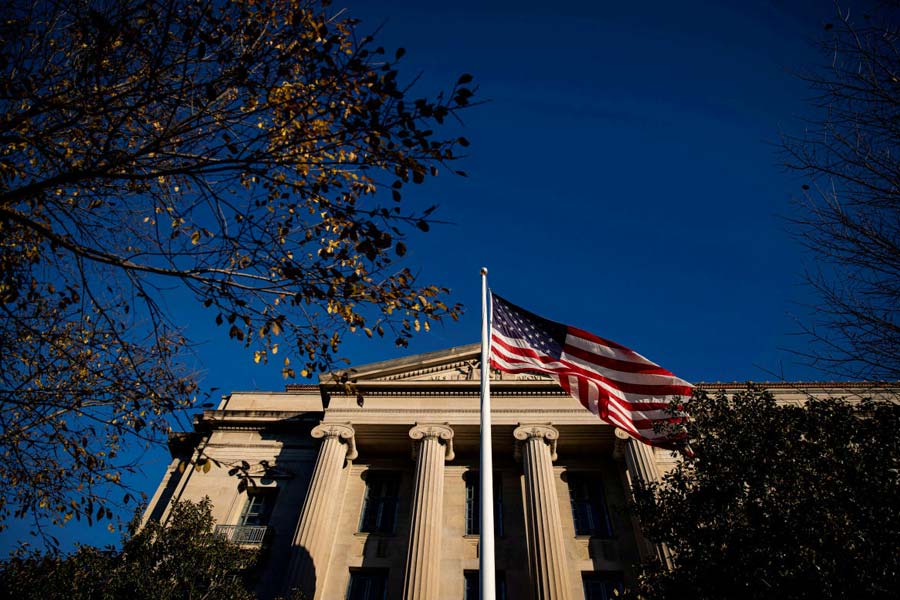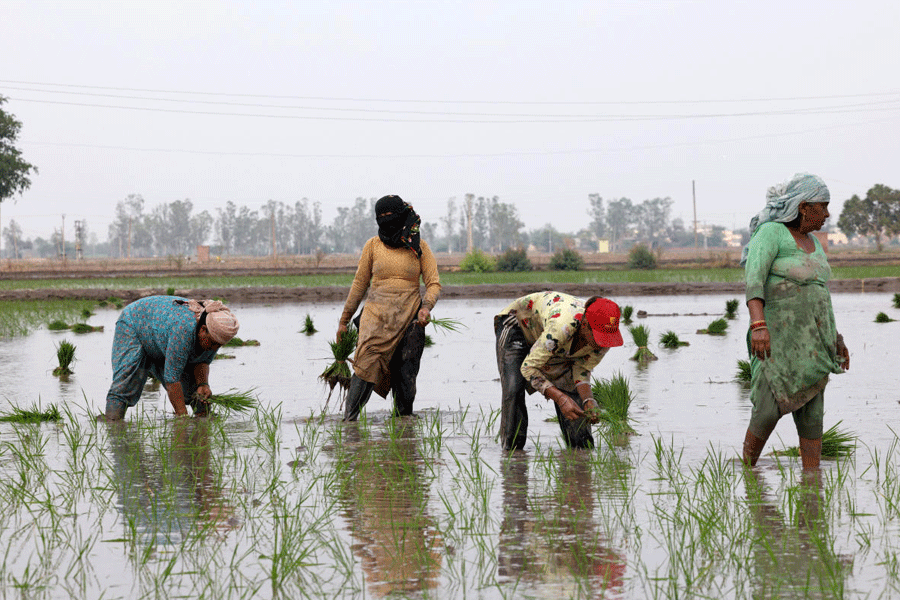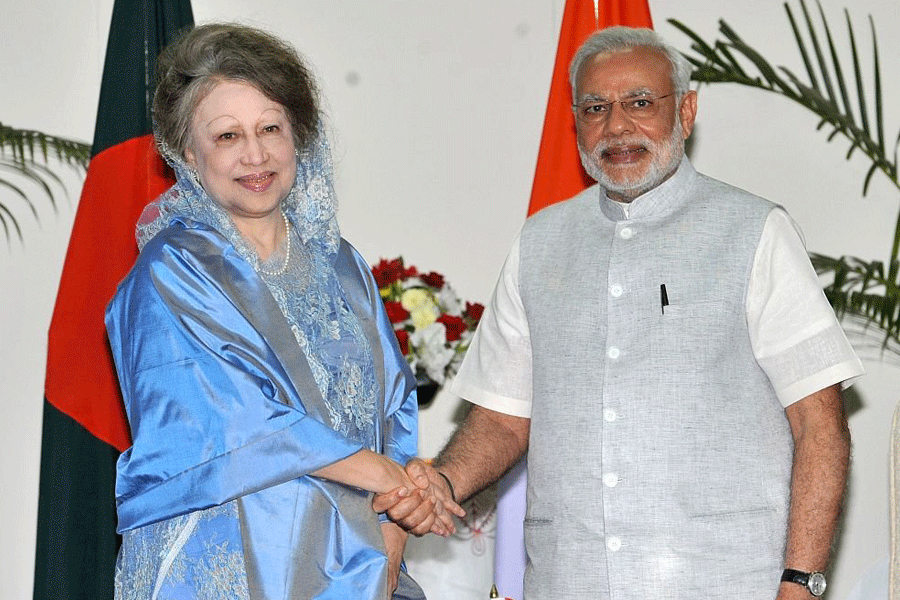 |
| Chief minister Hemant Soren helps villager Lalku Mahli to authenticate his identity on the handheld biometric device at Ormanjhi in Ranchi on Wednesday. Picture by Prashant Mitra |
Ranchi, Jan. 22: Chief minister Hemant Soren today launched the much-awaited Aadhaar-linked public distribution system (PDS) from Ormanjhi block of Ranchi district in a bid to efficiently implement Food Security Act and curb large-scale graft that has become synonymous with subsidised foodgrain distribution.
Under the system, the biometric identity of each beneficiary will be authenticated at each PDS store, forcing dealers to give foodgrain to the actual person instead of fudging manual records and selling the commodity in the open market.
Aadhaar numbers of beneficiaries are stored in a central database of food and civil supplies department, while each PDS shop will have a server and each dealer a handheld biometric device to authenticate the identify of the beneficiary by fingerprint-matching.
To help illiterate beneficiaries, the handheld device will have recorded messages in Hindi to guide them through the authentication process, telling them when to press their fingerprint, for instance.
But, another major loophole, that of PDS dealers distributing less grain by weight than what is mandated under central and state welfare schemes, won’t be addressed for now.
Unscrupulous dealers often cheat on weight, a fact that emerged most shockingly when Hazaribagh district resident Mosamat Geeta (40) and her Sangeeta (12) died of starvation last year and neighbours alleged they got around 20kg of grain from their ration store.
Major schemes include Antyodaya Anna Yojana where the poorest of the poor get 35kg rice or wheat at Rs 3 and Rs 2 per kilo and BPL scheme where the quantity of grain is same, but rates are Rs 7 per kilo of rice and Rs 6.50 per kilo of wheat. Then, there is Annapurna Yojana where senior citizens get 10kg of rice or wheat for free.
Jharkhand, however, subsidises Antyodaya and BPL schemes at Re 1 per kilo.
Each PDS or ration store is supposed to sell subsidised rice, wheat, sugar, salt and kerosene. But sugar is absent in Jharkhand’s PDS stores for months now.
“We get a lot of complaints that beneficiaries don’t get PDS allotments and middlemen are involved in irregularities. The new system will ensure that the genuine beneficiary gets his PDS allotments. We have launched the new system in Ormanjhi block and will slowly expand its ambit across the state,” Hemant said in his address.
But Hemant did not give a deadline about when the new system would cover the entire state, probably because large tracts don’t have electricity and computerisation poses a challenge.
“The new system will transform PDS into an efficient and transparent one. Now, the beneficiary can avail his grain allotment from any dealer across the state through Aadhaar. It gives him or her flexibility of choice,” chief secretary R.S. Sharma, the driving force behind the system, said.
It means that if a beneficiary suspects one dealer is fudging weights, he can now go to another.
“Around 91 per cent people in Jharkhand have Aadhaar numbers. So, implementation of Aadhaar-linked PDS won’t be difficult. If glitches crop up, the entire administration will be engaged to fix them. We will make the new system work and present a model for the country on efficient PDS through technology,” Sharma said.
Ranchi MP Subodh Kant Sahay, state food and civil supplies minister Simon Marandi and his department secretary Pradeep Kumar, and Ranchi deputy commissioner Vinay Kumar Choubey were present at the event.
Chutupalu couple Lalku Mahli and his wife Sunita Devi became the first lot of Aadhaar-enabled PDS beneficiaries.
Hemant handed over 35 kg of rice to the couple after they went through their fingerprint validation via the handheld device of their dealer Ramesh Prasad Sahu.
Now, time will tell when Jharkhand’s 35 lakh BPL households entitled to subsidised foodgrain through PDS stores get what they owe from the state, not one gram less.











